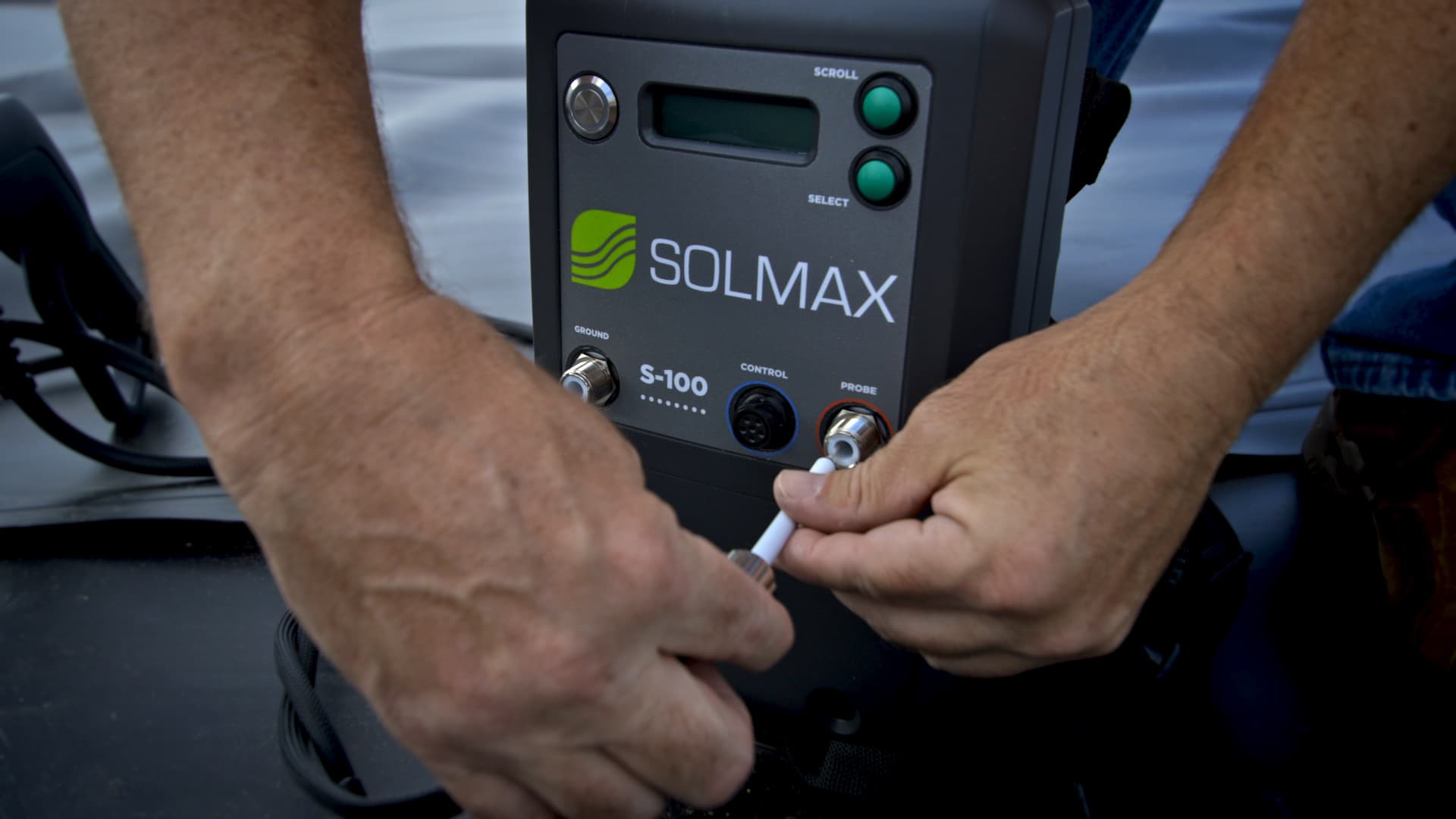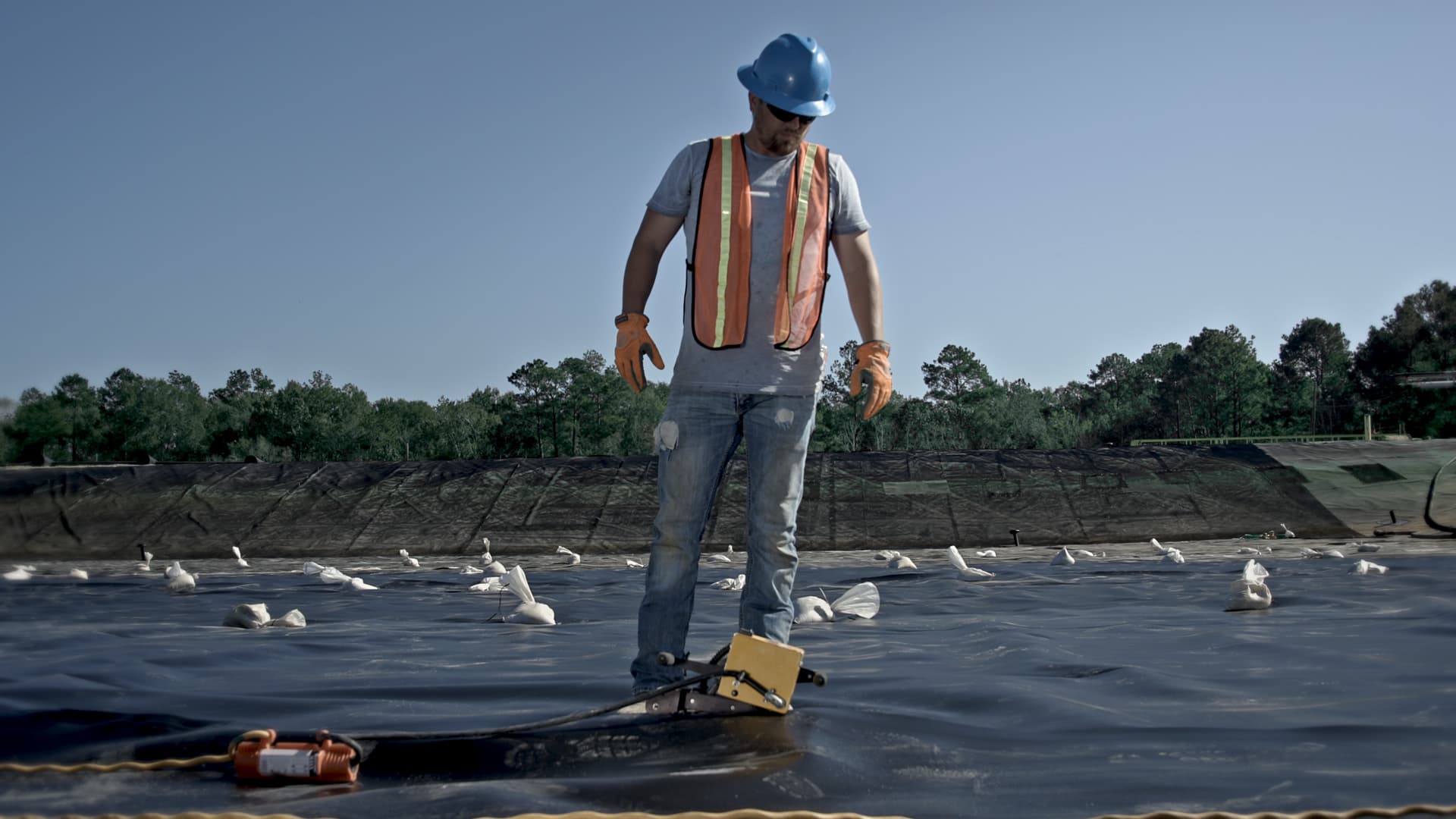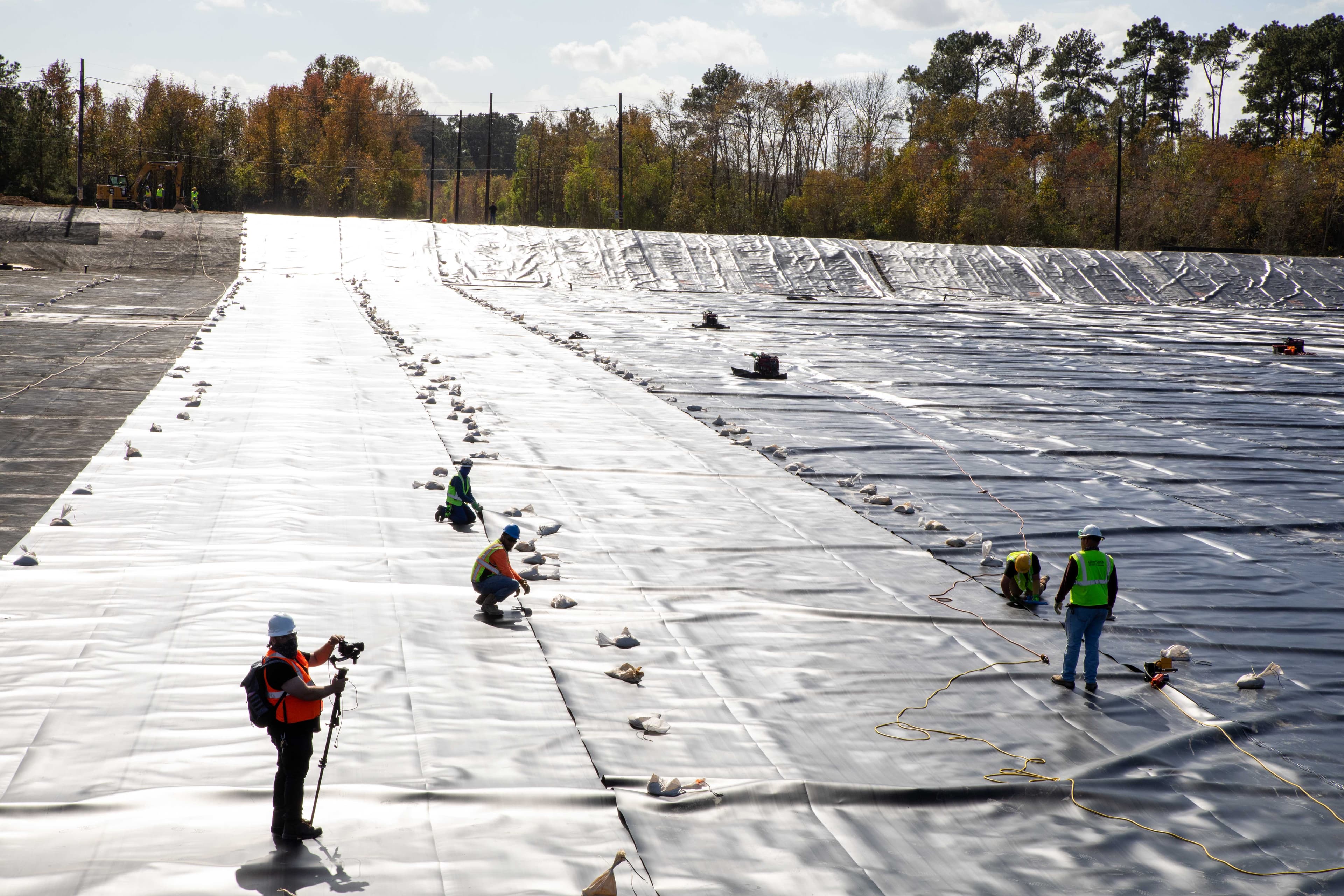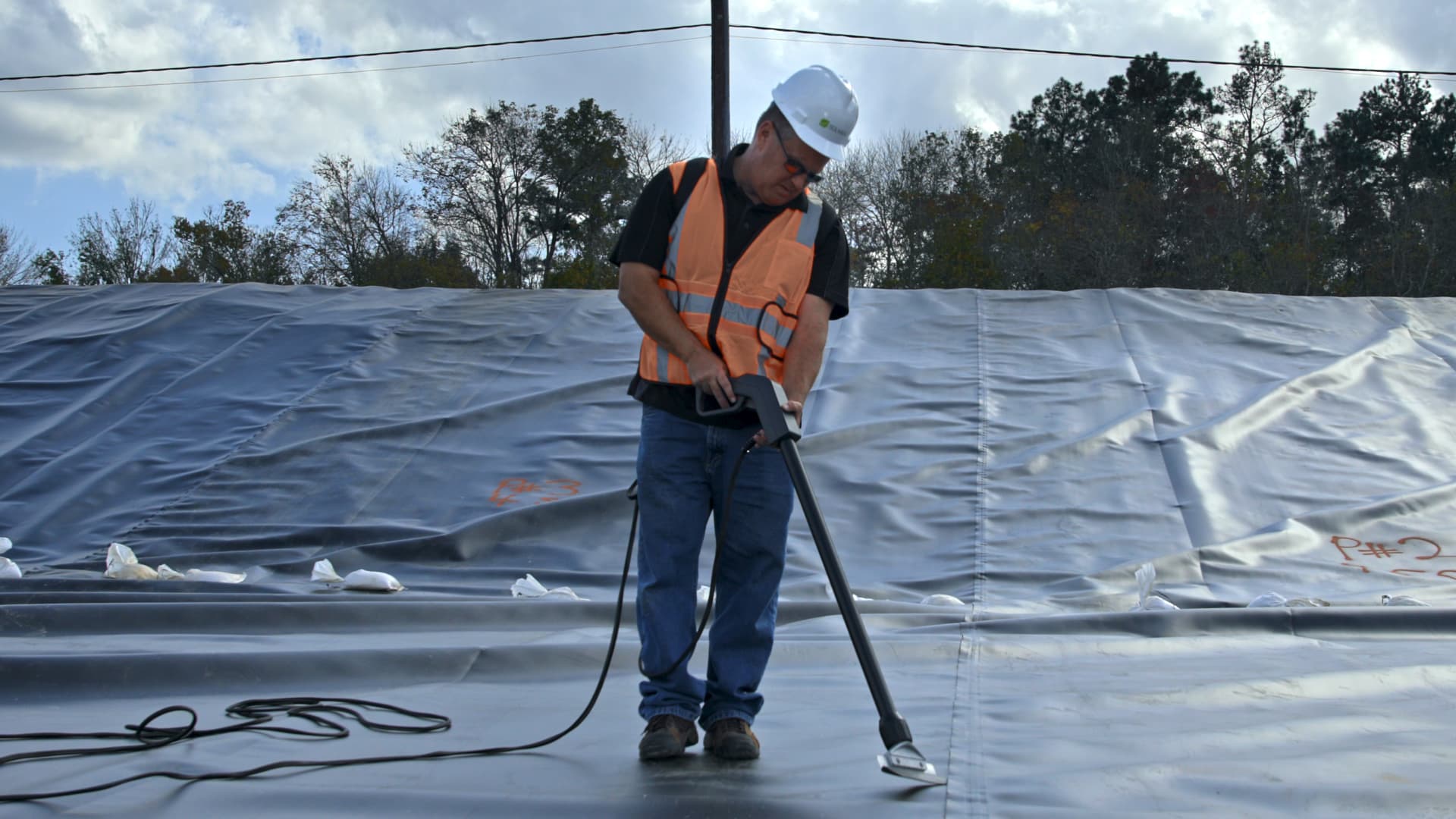
Products
Industries
Motiva Brine pond liner replacement and leak inspection with GSE
Overview
The Motiva Brine Pond in southeast Texas supports the storage of butane in underground salt caverns. The pond is about five acres and has been in service for about 15 years. When increased leakage was detected, an inspection of the liner system was initiated.
Challenge
The liner system, from bottom to top, comprised a subgrade, composite venting layer, secondary liner, geonet, and primary liner. Inspection of the primary liner identified areas where the primary conductive liner was torn away from mechanical attachments. As the other layers were in good condition, US FUSION & Specialty Construction, LLC decided to replace only the primary liner. US FUSION & Specialty Construction, LLC was contracted to install the selected primary liner and perform a certified quality audit (CQA) of the liner by conducting an electric liner integrity (ELI) Spark test. The GSE® HD Leak Location liner, a conductive-backed high-density polyethylene (HDPE) geomembrane which facilitates electric leak location, was selected for the primary liner.
Solution
In Texas, if brine ponds exceed the permitted action leakage rate (ALR) due to leaks in the geomembrane, the pond must be removed from service until leaks are repaired and leakage is below the ALR. This made it important for US FUSION & Specialty Construction, LLC to implement a solution that could easily and reliably be tested for leaks using an ELI survey, both during installation and in the future.
At the site, 25,700 m² (277,000 ft²) of 1.5 mm (60 mil), black, smooth GSE Leak Location liner was installed, with Solmax’s S-100 Spark Tester used to perform the bare electrical leak location survey on the floor of the project. A cart electrode was used to ease the performance of the survey. During the CQA spark testing of the primary liner, three holes were found in the geomembrane and were repaired. The pond was put back in service with no leakage observed.

Conduct electric liner integrity survey

Identify and repair three geomembrane holes

Ensure no leakage after repairs are completed.

Replace primary liner due to detected leakage

Install 25,700 m² of geomembrane line

Install GSE HD Leak Location liner

Use Solmax S-100 Spark Tester for inspection
Explore more case studies
View allMIRAFI geotextiles prevent subgrade failure and reduce track downtime
Canadian Pacific Railway (CP) identified track settlement issues and partnered with Solmax and Clifton Associates to implement a geosynthetic solution, reducing ballast use by 43% and completing repairs on a 72 ft section in under seven hours.
MSE walls with MIRAGRID XT for rail expansion
GO Transit used hybrid MSE walls with MIRAGRID XT geogrids to stabilize embankments on Lakeshore West Line, ensuring stability under space and load constraints.
Stabilizing soft clay soils and shallow utilities during the reconstruction of Main Street
Main Street in Palisade, CO, was reconstructed using geosynthetics to address soft soils and shallow utilities, reducing excavation and aggregate use.